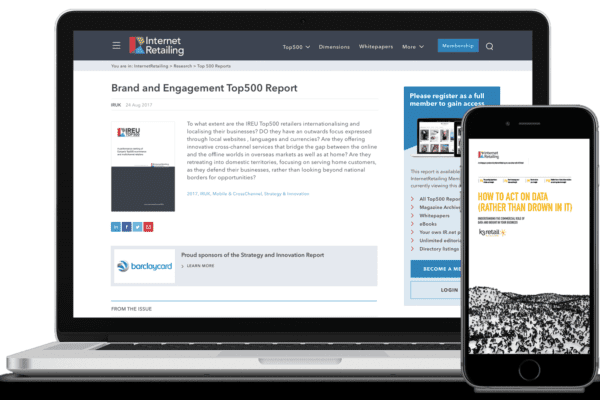While sales are growing for most retailers, driven by accelerated use of online to release that pent up consumer demand, are they missing out on potentially even more sales?
Many people simply can’t easily see websites to use them. In fact, as many as 3 million people in the UK are partially sighted – and they have trouble using websites.
That doesn’t just mean people who are registered blind, but the many of us with poor eyesight through congenital defects, age and even things such as colour blindness.
What is often overlooked when designing websites – fixed and mobile – is that they have to work for everyone, not just those with 20/20 vision. Colour combinations, font and image sizes, the tools all have to be considered and often they aren’t.
Of course, these sites have to look good and be engaging, but it is increasingly important to be inclusive and running sites that everyone can use is not only a duty but makes sound commercial sense.
These 3 million people – not to mention all the other millions who just have poor eyesight – want to spend money online just as much as anyone and ignoring them risks cutting out a potentially massive chunk of the market.
So who does it well and who doesn’t? Research has graded the best and worst of these sites and fashion retailer H&M comes out on top. Halfords, sadly, bottom. The study also delves into which sites accommodate a range of visual problems – including colour blindness – and rates the retailers. It makes interesting reading and, apart from H&M, many retailers really need to rethink how they design their sites.
The likes of Sainsbury’s, Tesco and B&Q are all up there as sites that are easy to use for visually impaired shoppers – and are likely to see extra sales as a result. Halfords less so.
A quick look at the sites that come top and bottom reveals something interesting to my untrained eye: the ones that come out top for ease of use for the visually impaired are actually sites that look good and are well designed for any user. The ones at the bottom are a bit less pleasing to the eye. It isn’t scientific, but it seems to me that simply getting a nice clean and easy to use site design can actually help accommodate many of these shoppers.
Colour blindness is another matter. Clashing colours are quite easy to spot – they clash for everyone – but the range of different colour blindness combinations makes accommodating this more tricky. Often, retailers are also constrained by their own corporate colours.
That said, it is interesting to see that the issue is being looked at. It has long baffled me as to why visually impaired people are cut out of the ecommerce loop. Not that ecommerce is so central to shopping habits, that looks set to change.









